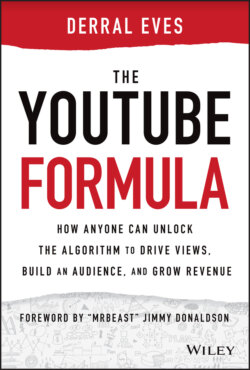Читать книгу The YouTube Formula - Derral Eves - Страница 22
4 The Algorithm Breakdown
ОглавлениеYou just learned a lot about the history of the systems that have run YouTube since its inception, and you know that those systems have become quite good at what they do. But what does that mean literally? When you go to the website, what do the systems look like as you navigate? To really grasp these foundational concepts, let's clarify what is actually happening when a site visitor shows up.
As soon as visitors arrive at youtube.com, they are being followed. It's like when you were a kid and went to your friend's house to play and their pesky kid brother just wouldn't leave you alone, but think of it this way: instead of being pesky, the brother quietly observes your behavior and accommodates your every whim. You want a snack, so he runs to the kitchen and returns with an apple. You say, “no thanks.” So he takes the apple back and returns with a bag of Cheetos. You eat the Cheetos. Then you have a conversation about Han Solo, so he runs to the living room and plays The Empire Strikes Back for you. The next time you go to their house, as soon as you walk through the door he hands you a cookie and turns on Return of the Jedi. His prediction about what you might want to eat or watch is based on the last time you came over, and it's probably spot on. Oh, and also, you're probably going to want to go to their house more often with this kind of treatment. They know what you like. (Unless he recommends The Last Jedi or Solo, in which case you'll just go to the Zuckerbergs' next time because those movies stink.)
Let's say that in place of Cheetos, you wanted carrot sticks, and in place of Star Wars, you watched The Office reruns. The next time you showed up, li'l bro would offer broccoli and Parks and Recreation. The concept works no matter your preferences.
These examples help explain YouTube's goals:
Predict what the viewer will watch.
Maximize the viewer's long‐term engagement and satisfaction.
How they do it is broken into two parts: Gathering and Using Data, and Algorithms with an “S.”
